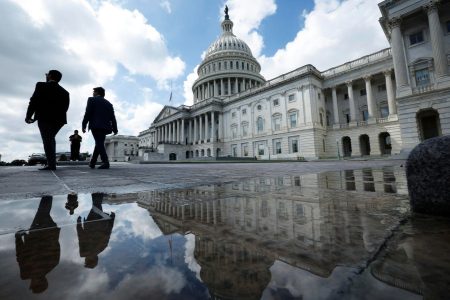More than six months after the House of Representatives passed a tax deal that would restore bonus depreciation, end the Employee Retention Credit (ERC) early, and expand the Child Tax Credit (CTC), the Senate finally held a vote. The result? Senate Republicans blocked the bill.
The bill in the House had bipartisan support: on January 31, 2024, the bill was fast-tracked to the floor with a vote that required a two-thirds majority. The vote wasn’t even close—357 yeas to 70 nos.
A very different scenario played out in the Senate where a procedural vote to advance the bill failed, 48-44. The bill required a 2/3 majority in the Senate to move forward.
More than 15% of the Senate chose to sit this one out, including Marsha Blackburn (R-TN), John Fetterman (D-Pennsylvania), John Hoeven (R-North Dakota), Bob Menendez (D-New Jersey), Mitt Romney (R-Utah), Tim Scott (R-South Carolina), J.D. Vance (R-Ohio), and Mark Warner (D-Virginia).
The sole “no” vote from the Democrats came from Senate Majority Leader Chuck Schumer (D-NY), who switched his vote to “no” for procedural reasons—it allows him to maintain his option to bring up the bill again.
The charts look a little different for another reason: there are no registered Independent members of the House, but there are four Independent members in the Senate. Those members are Angus King (Maine), Joe Manchin III (West Virginia), Bernie Sanders (Vermont), and Kyrsten Sinema (Arizona)
You can see how your Senator voted here.
Sen. Mike Crapo (R-Idaho), Ranking Member of the Senate Finance Committee, called the vote an “attempt to score political points” by Democrats, criticizing the scheduling of the vote, which was less than twenty-four hours before the August break (the bill had been available for review since January). Crapo said that Senate Republicans had concerns about the policy, referring to a statement in the child tax credit portion of the bill as a subsidy.
Child Tax Credit
The bill would have expanded the child tax credit. It would phase in a refundable portion of the child tax credit and increase the maximum refundable amount per child to $1,800 in the tax year 2023, $1,900 in the tax year 2024, and $2,000 in the tax year 2025—a refundable credit would allow lower-income families to qualify for the credit even if they did not owe any tax. The provision would also allow for the same flexibility taxpayers had during Covid to use the current tax year or prior tax year earned income to calculate the credit. The value of the credit would also be adjusted for inflation.
Eligible families would have received an additional $900 on average this tax filing season.
Other Changes
While the bill’s main focus was the child tax credit, The Tax Relief for American Families and Workers Act of 2024 includes other potentially retroactive changes, including business-focused breaks. Those include:
Casualty Losses. The 2017 tax reform law generally eliminated casualty losses for individuals except in cases of a federally declared disaster. The Taxpayer Certainty and Disaster Tax Relief Act of 2020 changed the rules again, providing tax relief to certain individuals in qualified disaster areas. The relief included eliminating the requirement that casualty losses must exceed 10% of adjusted gross income (AGI), requiring losses to exceed $500 per casualty to be deductible, and allowing taxpayers to claim the casualty loss deduction “above the line,” i.e., without itemizing their deductions. The proposal would extend the 2020 rules retroactively.
Forms 1099-NEC. Complaints about those pesky Forms 1099 haven’t abated. Under current law, the reporting threshold for payments by a business for services performed by an independent contractor or subcontractor and for certain other payments is generally $600. The proposal would increase that section threshold to $1,000 for payments made after December 31, 2023, and adjust the inflation threshold after 2024.
Research & Development (R&D) Expensing. Under current law, businesses with research or experimental costs paid after December 31, 2021, have to deduct those costs over five years (if the research is outside of the U.S., the costs must be deducted over 15 years). The plan would push that date to December 31, 2025, for U.S.-based research, meaning businesses could immediately deduct those costs for 2023, 2024, and 2025 (and retroactively to 2022).
Depreciation. As with research and development costs, businesses must generally write off the costs of assets over their “useful life”—a number of years based on the kind of asset. With bonus depreciation, businesses can immediately deduct those costs, subject to certain limits. Under the proposal, 100% bonus depreciation would be restored for qualified property placed in service after December 31, 2022, and before January 1, 2026 (retroactive to the beginning of 2023). Currently, bonus depreciation is limited to 80% of costs in 2023 and 60% in 2024.
Additionally, under section 179, taxpayers can immediately expense qualifying property rather than depreciate those costs over time, subject to limitation. Currently, the maximum amount for expensing property is $1 million so long as the total equipment does not exceed the $2.5 million cap. The proposal would increase that amount to $1.29 million (subject to a cap of $3.22 million). Those amounts would be adjusted for inflation for taxable years beginning after 2024.
Interest Deductibility. For tax years beginning before January 1, 2022, the limitation on the deduction for business interest is figured using adjusted taxable income (ATI) without regard to any deduction allowable for depreciation, amortization, or depletion—earnings before interest, taxes, depreciation, and amortization, or EBITDA. The proposal would allow for continued flexibility by extending the application of EBITDA to taxable years beginning after December 31, 2023 (and potentially for taxable years beginning after December 31, 2021, if you elect to do so).
Early End To ERC. Under current law, taxpayers can claim the Employee Retention Credit—or ERC—until April 15, 2025. Under the bill, the program would end the beleaguered program early on January 31, 2024. The proposed legislation also includes provisions to extend the statute of limitations on ERC assessment to six years (instead of the current five-year rule). This gives the IRS more time to identify bad claims and assess additional tax, penalties, and interest accordingly, if applicable.
Special Exclusions. The proposal would exclude from gross income any amount received by or on behalf of an individual as a qualified wildfire relief payment (defined as any amount received by or on behalf of an individual for expenses, damages, or losses incurred as a result of a qualified wildfire disaster, but only to the extent any expense, damage, or loss is not compensated for by insurance or otherwise) during taxable years beginning after December 31, 2019, and before January 1, 2026. Similar relief would apply to East Palestine train derailment payments received on or after February 3, 2023.
Special Rules for Residents of Taiwan. The U.S. does not have a tax treaty with Taiwan. The deal also provides “targeted and expedited relief from double taxation on U.S.-Taiwan cross-border investment.” Those would apply once the U.S. determined that Taiwan has granted reciprocal benefits to U.S. persons (that’s typical with respect to tax treaties).
More Information
You can read the text of the bill here.
Read the full article here












